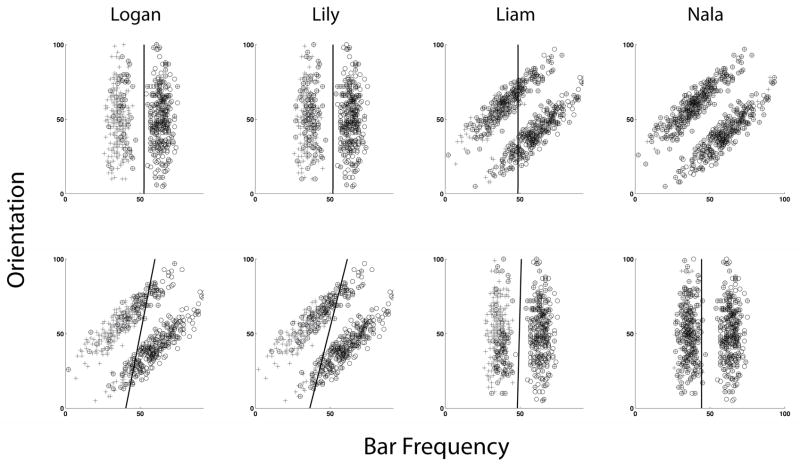Figure 4.
The decision bounds that provided the best fits to the last 1,000 responses of the four capuchin monkeys in the rule-based (RB) and information-integration (II) tasks. Plus and circle symbols, respectively, indicate an animal’s Category A or Category B responses for stimuli plotted veridically within the spatial frequency-orientation stimulus space. The line represents the best-fitting decision boundary as determined by the modeling procedures described in the text. The animals’ first and second acquisitions, respectively, are shown in the top and bottom row. The absence of a decision bound for Nala’s first acquisition indicates that her purely chance performance led to the superior fit of a random-guessing model.

